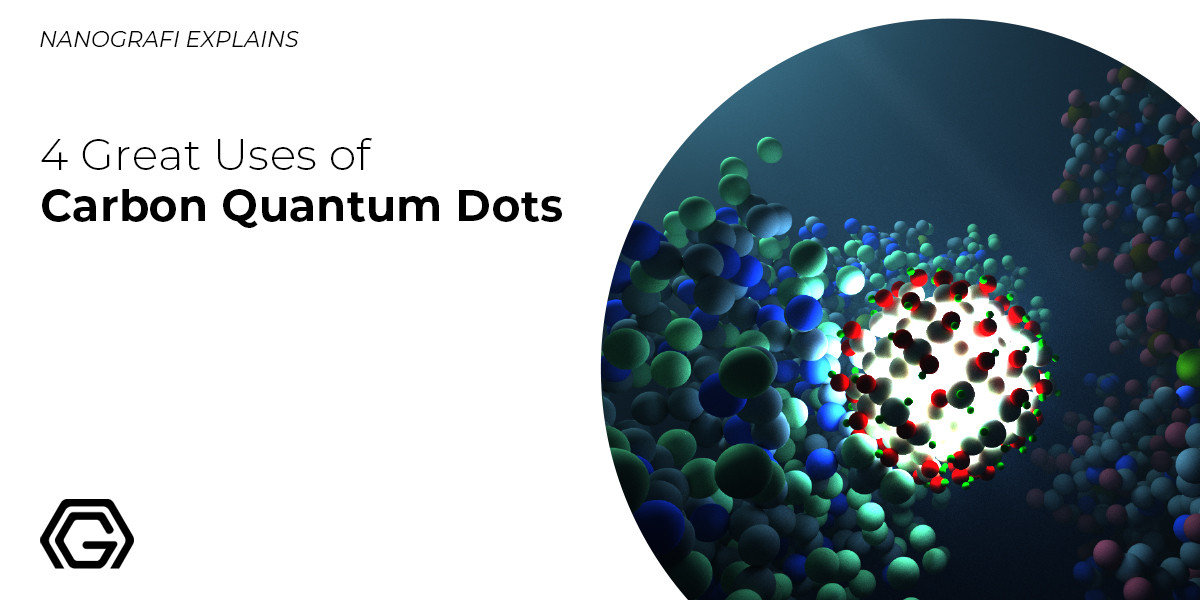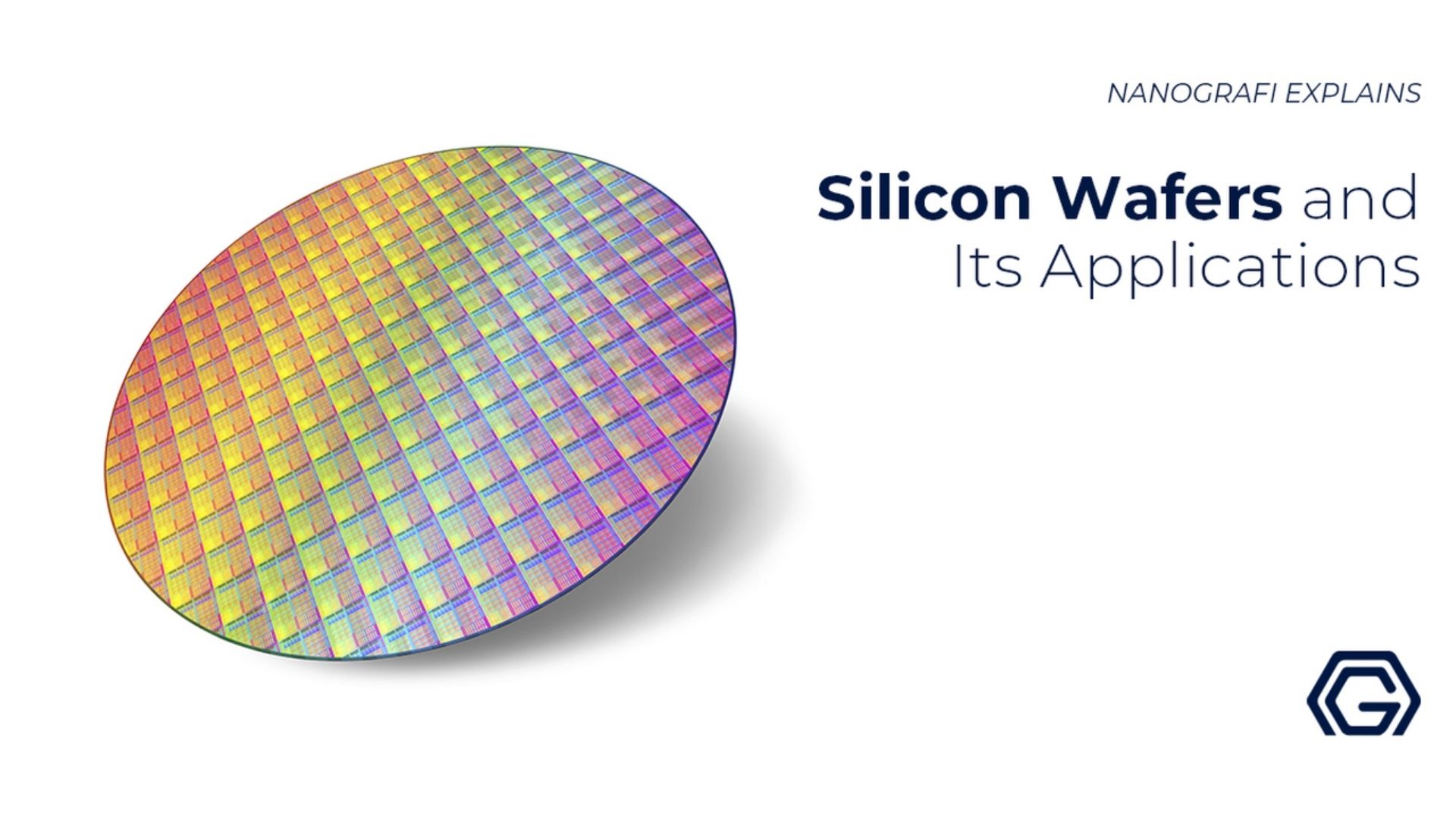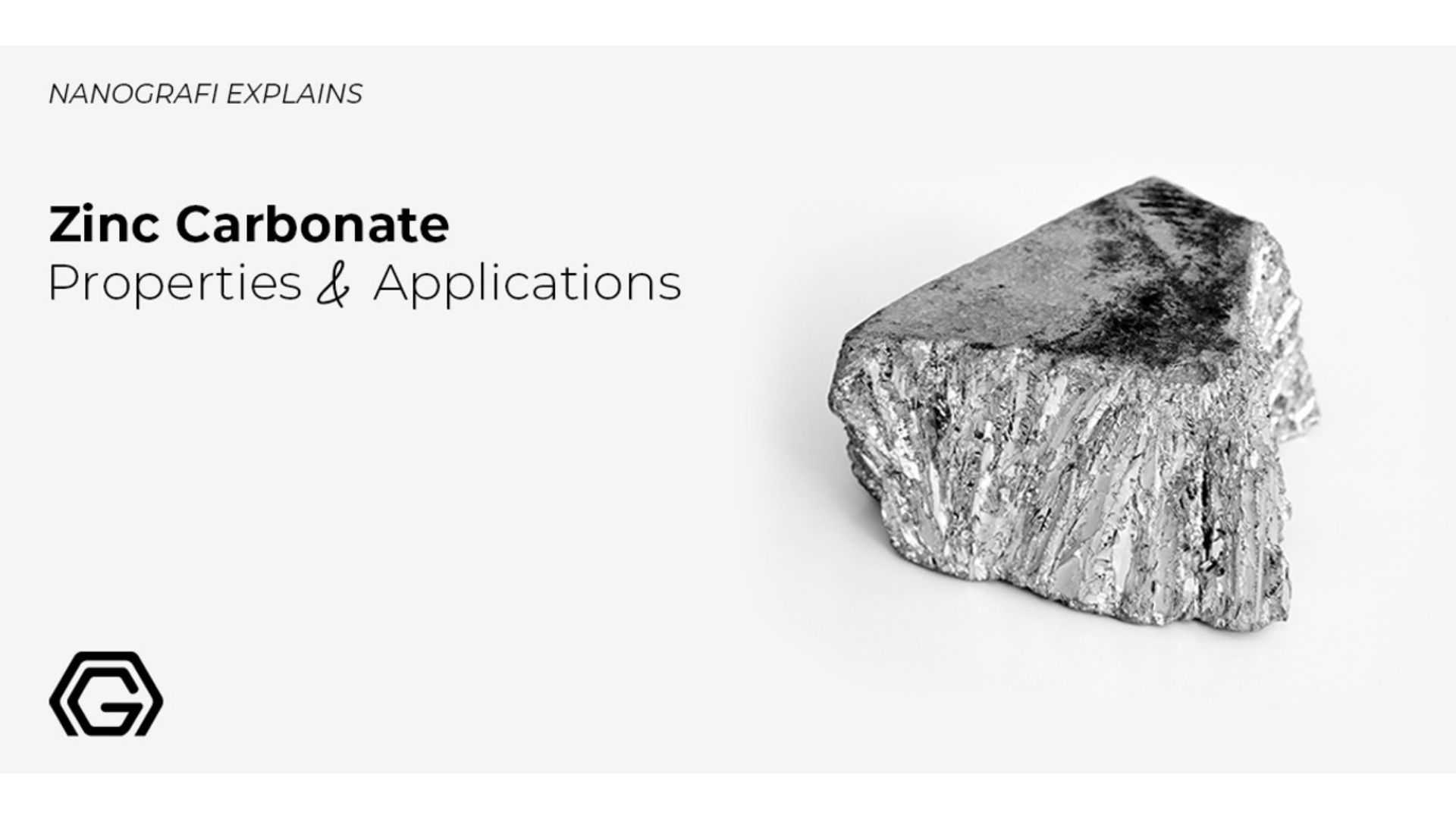4 Great Uses of Carbon Quantum Dots
Carbon quantum dots are carbon dots that consist of carbon nanoparticle clusters with various atoms.
Being nanoparticles, they have a definite size range that is impossible to be documented without having a look at them through the microscope as the human eye is incapable of conducting this activity. They have excellent properties and characteristics which enable the industries to enhance their products as their applications keep exceeding and the road towards success has become rather a smooth one in recent times.
Introduction
Carbon quantum dots, usually known as the carbon dots (known as CDs, C-dots, or CQDs), are carbon nanoparticles that are less than 10 nm in size and they possess some kind of surface passivation.
Characteristics of Carbon Quantum Dots
Carbon quantum dots' components and structures determine the diverse characteristics of the CQDs. Remarkable biocompatibility and solubility are imparted by various carboxyl moieties on the CQD surface in water. CQDs are enabled by such kinds of surface moieties for functioning as the proton conducting nanoparticles. Carbon Quantum dots are also appropriate for surface passivation and chemical modification with numerous biological, inorganic, polymeric, or organic materials. Carbon Quantum dots' physical characteristics and fluorescence characteristics are improved by surface passivation.
Amine and Hydroxamic Acid
These days, it's been determined that amine and hydroxamic acid-functionalized CD can produce tricolor (inexperienced, yellow, and purple) emission whilst delivered with one of a kind pH environment and this tricolor emission can be preserved in the ORMOSIL film matrix. A paper posted in 2019 showed that CQD can resist temperatures as high as 800 °C, paving way for packages of CQD in excessive temperature environments. Primarily based on carbon, CQDs own such houses as true conductivity, benign chemical composition, and photochemical and thermal stability.
Synthesis of Carbon Quantum Dots (CQDs)
Synthetic methods for CQDs are roughly divided into two categories, "top-down" and "bottom-up" routes. These can be achieved via chemical, electrochemical or physical techniques. The CQDs obtained could be optimized during preparation or post-treatment. Modification of CQDs is also very important to get good surface properties which are essential for solubility and selected applications.
Synthetic Methods of Carbon Quantum Dots
The "Top-down" synthetic route refers to breaking down larger carbon structures such as graphite, carbon nanotubes, and nanodiamonds into CQDs using laser ablation, arc discharge, and electrochemical techniques. For example, Zhou et al. first applied the electrochemical method to the synthesis of CQDs. They grew multi-walled carbon nanotubes on carbon paper, then they inserted the carbon paper into an electrochemical cell containing supporting electrolytes including degassed acetonitrile and 0.1 M tetrabutylammonium perchlorate. Later, they applied this method in cutting CNTs or assembling CNTs into functional patterns which demonstrated the versatile callability of this method in carbon nanostructure manipulations.
Bottom-up Synthetic Course
"Backside-up" artificial route includes synthesizing CQDs from small precursors together with carbohydrates, citrate, and polymer-silica nanocomposites via hydrothermal/solvothermal remedy, supported by synthetic, and microwave artificial routes. as an example, Zhu et al. defined an easy technique of getting ready CQDs by way of heating a solution of poly(ethylene glycol) (PEG) and saccharide in 500 W microwave oven for 2 to ten min. Currently, inexperienced synthetic methods have also been hired for the fabrication of CQDs.
Size Manage
Similarly to publish-remedy, controlling the scale of CQDs at some point in a making-ready manner is also widely used. For example, Zhu et al. pronounced hydrophilic CQDs thru the impregnation of citric acid precursor. After pyrolyzing CQDs at three hundred °C for two hours in the air, then removing silica, accompanied through dialysis, they organized CQDs with a uniform length of one.5–2. Five nm which confirmed low toxicity, top-notch luminescence, proper photostability, and up-conversion properties.
Modification
Being a new form of fluorescent nanoparticles, packages of CQD lie within the area of bioimaging and biosensing because of their organic and environmental pleasant composition and tremendous biocompatibility. Which will continue to exist in competition with conventional semiconductor quantum dots, an excessive quantum yield should be finished. even though a good instance of CQDs with ~eighty% quantum yield turned into synthesized, most of the quantum dots synthesized have a quantum yield below 10% up to now. Surface-passivation and doping strategies for modifications are commonly implemented for improving quantum yield.
Prevention from Pollution
To save you surfaces of CQDs from being polluted with the aid of their environment, floor passivation is performed to alleviate the unfavorable influence of floor infection on their optical homes. A thin insulating layer is formed to achieve surface passivation via the attachment of polymeric substances on CQDs' surface handled through acid.
If you are interested in the applications of graphene,
you can read our blog post here.
Doping Techniques of Carbon Quantum Dots
In addition to floor passivation, doping is also a not unusual method used to music the homes of CQDs. Numerous doping methods with factors along with N, S, and P have been tested for tuning the houses of CQDs, amongst which N doping is the most common manner due to its awesome potential in enhancing the photograph luminescence emissions.
Mechanism of Carbon Quantum Dots (CQDs)
The mechanisms using which Nitrogen doping enhances the fluorescence quantum yield of CQDs, as well as the structure of heavily N-doped CDs, are very debated problems in the literature. Zhou et al. implemented XANES and XEOL in investigating the electronic structure and luminescence mechanism in their electrochemically produced carbon QDS and determined that N doping is nearly absolutely answerable for blue luminescence. Synthesis of the latest nanocomposites primarily based on CDs has been said with uncommon properties. as an example, a brand new nanocomposite has been designed by way of using CDs and magnetic Fe3O4 nanoparticles as precursors with nanozymetic pastime.
Synthesis of Carbon Quantum Dots (CQDs)
The various routes were proposed to manufacture the CDs with desired houses for a specific utility during the last decade. commonly, these well-mounted synthesis techniques of CDs are classified into "top-down" and "bottom-up". The pinnacle-down strategies include ultrasonic synthesis, chemical exfoliation, electrochemical oxidation, arc discharge, and laser ablation. In fashionable, GQDs, second nanoparticles, are received with the aid of the "pinnacle-down" strategy from the exfoliation and slicing of macroscopic carbon systems with the apparent graphene lattices, inclusive of graphite powder, carbon black, activated carbon, carbon nanotubes, carbon soot, and carbon fibers. pinnacle-down strategies commonly require lengthy processing instances, harsh response conditions, and costly substances and gadgets. This strategy is appropriate for mass production.
3D Nanoparticles
In contrast, CQDs and CPDs, each three dimensional nanoparticles with a spherical center, are usually synthesized from the lowest-up approaches. The CQDs and CPDs are produced thru the polymerization of molecular precursors, together with glucose, sucrose, and citric acid, via microwave pyrolysis, solvothermal reactions, plasma remedy, and chemical vapor deposition, which display fewer defects and high controllability. Here, we can difficult the primary techniques for CD synthesis, size manipulation, and floor moieties via the treatment of restrained pyrolysis and amendment. surface houses of CDs could be optimized at some point of preparation or similarly remedy for the selected applications.
Top-Down Tactics for Chemical Exfoliation
Chemical exfoliation is a facile and handy approach for mass manufacturing exceptional CDs without complicated gadgets. The precursor carbon materials (carbon fibers, graphene oxide, carbon nanotubes) are cleaved through strong acids or oxidizing retailers. Mao and coworkers fabricated for the primary time fluorescent GQDs with one-of-a-kind sizes from candle soot by using the use of HNO3 under a relatively excessive temperature in 2007. Afterward, Peng et al. organized GQDs thru a chemical exfoliation of carbon fibers by way of H2SO4 and HNO3. The as-organized GQDs with different sizes degrees display yellow, inexperienced, and blue PL emissions under one-of-a-kind stirring temperatures, respectively, indicating that the hit guidance of GQDs can be carried out through chemical cleavage of carbon fiber.
Low-fee Materials
Later, a few low-value materials had been taken into consideration as a precursor to prepare GQDs below sturdy acid situations. Ye and his coworkers organized hexagonal GQDs with a size variety of 3–6 nm by using the chemical cleavage of coal with crystalline carbon. ultimately, Zhao et al. utilized asphaltene to fabricate GQDs with excitation-structured PL emission. however, it's miles a tedious method to further purify the product by using the elimination of extra H2SO4, increasing the overall synthesis price.
If you are interested in the applications of silicon wafers,
you can read our blog post here.
Bottom-up Procedures for Microwave Synthesis
A green, price-powerful microwave-assisted strategy is extensively employed to synthesize the CDs in much less time. Microwave irradiation can provide uniform warmness for the formation of CDs. Li et al. synthesized green fluorescent GQDs by way of microwave-assisted chemical cleavage of move sheets underneath acidic conditions for the first time. several epoxy moieties at the surface of cross sheets may be cracked below microwave treatment. The acquired GQDs with single-layer have a mean diameter of 4. five nm and may be in addition designed to the blue fluorescent GQDs by reduction of surface radical moieties.
One-pot approach for Water-Soluble Carbon Quantum Dots
Wang and coworkers reported a simple one-pot microwave-assisted method to manufacture the water-soluble CDs from protein-rich eggshell membranes. The acquired CQDs display awesome fluorescence emission with a quantum yield of approximately 14% as well as the capability of simultaneous willpower of Cu2+ and glutathione.
Novel Fluorescent Carbon Quantum Dots (CQDs)
Yao et al. proposed a new direction to produce novel fluorescent CQDs from transition-metallic ions and crab shells by microwave-assisted hydrothermal. The as-organized Gd @ CQDs show a high balance against pH and NaCl awareness, indicating that Gd @ CQDs have the potential application in drug shipping. In every other painting, CDs had been obtained from Mangifera indica leaves by way of a simple microwave-assisted hydrothermal. The obtained CDs possessed desirable biocompatibility and high photostability, which had been used as an intracellular temperature sensor.
Hydrothermal Approach for Carbon Quantum Dots
The hydrothermal approach for the instruction of CDs has the benefits of low cost and non-toxicity. compared to different artificial routes, the hydrothermal technique is a simple method to synthesize CQDs. In widespread, the water solution of mixtures became enclosed with Teflon in an oven and hydrothermally reacted at excessive strain and high temperature. Pan et al. suggested a green course to put together blue fluorescence CQDs by way of the hydrothermal approach for the first time. The epoxy moieties at the floor of the cross sheets had been broken into CQDs throughout the hydrothermal remedy.
Easy and Exceptionally Efficient Path
Subsequently, Zhao's group additionally suggested an easy and exceedingly efficient path to put together CQDs by way of hydrothermal treatment. A few researchers also applied oxidants to accelerate the hydrothermal response. As an example, Halder et al. said an easy hydrothermal approach to prepare GQDs by adding H2O2 for accelerating exfoliation of cross sheets, indicating effective scissors of the pass sheets by way of H2O2 for the duration of hydrothermal response. meanwhile, in comparison to the traditional precursors, waste biomass became additionally visible as carbon resources.
Applications of Carbon Quantum Dots in Various Fields
Excellent photoinduced electron transfer, low toxicities, good biocompatibility, and tunable PL emission are some of the excellent benefits that CDs have as high-efficiency fluorescent materials, and that's why they possess a huge amount of potential for numerous applications in photocatalysis, solar cells, bioimaging, and sensors, etc. Thus, the usage of CDs will be discussed here in numerous fields in the following sections.
Carbon Quantum Dots in Sensing
There has been the utilization of fluorescent sensors to detect molecules, anions, and metal ions as one of the significant applications of CDs. Molecules or ions quenched the CDs' PL emission due to resonance energy transfer and photo-induced charge transfer. Due to its effective combinations with the CDs, the most usual ion that is detected as compared with other ions is Fe3+. Moreover, the PL emission signal quench of CQDs can be used to detect some other anions like PO43−, S2−, and CEO−. Also, electrostatic interaction with the CDs can sensitively detect some of the molecules.
Carbon Quantum Dots in Bio-imaging
Instead of carrier drug molecules, CDs have been considered as biocompatible fluorescent dyes for in vivo imaging too because of the non-/low-cytotoxicity of the CDs. Photodegradation and photobleaching are not abided by the CDs made from various carbon sources. For suitable PM emission, there can be a modification of the CDs with numerous functional groups as superior candidates. There have been various studies in the past years, which reports the CDs' bioimaging potential. To enhance the signal-to-noise ratio (SNR), there was a common tuning of the PL emission of the CDs to a longer wavelength range. In the NIR region, PL emission of CDs was critical for the in vivo optical imaging because of the tissue's background in the NIR "water window". In comparison with the other heavy metal QDs, the CDs with strong absorptivity can compensate for the lower fluorescence yield for bioimaging.
Procedure
A route was proposed first by Sun et al. for staining the Caco-2 cells by utilizing PEG1500N passivated CDs for cellular imaging, which suggests that one can utilize CDs in the cell's fluorescent label. Moreover, in intracellular imaging, there was the utilization of some other cells like human lung cancer cells, pancreas progenitor cells, MCF-7 cells, HepG2 cells, and HeLa cells. As per reports by Zhai et al., stable and Intense red, green, and blue PL emission was shown by the L929 cells incubated with CDs with 543 nm, 488 nm, and 405 nm of excitation wavelengths. There was an injection of CQDs at 3 different locations into a nude mouse and then there was a collection of the fluorescent images with different excitation lights, where there were observations of only red spots in the in vivo fluorescence images of CDs.
Cellular Multicolor Imaging
N-S-BCDs were made by Wei et al. for cellular multicolor imaging from allium fistulosum because of their low cytotoxicity. Suitable functional groups were commonly utilized for modifying the surface of CDs to enhance the absorptivity with proteins or small molecules. For instance, stronger PL emission was shown by the CDs passivated with a hyperbranched polymer as compared to the CDs that were coated with a linear polymer.
Carbon Quantum Dots in Drug Delivery
It is due to the excellent biocompatibility, chemical inertness, low toxicity, and intense fluorescent nature that the CDs are the multifunctional vehicle for drug delivery systems. The transportation and elimination of a particular drug were done at a particular target for therapy. The recent focus of the CDs is on the delivery of drugs because of their superior characteristics.
For instance, the drug was loaded by Karthik et al. onto nitrogen-doped CDs through a covalent connection. There was the transportation of the aggregation of the drug-loaded CDs to cancer cells' cytoplasm and nucleus. Irradiation was used to release the drug at particular sites. Genomic DNA was used by Ding and coworkers as a carbon source for synthesizing BCDs to study drug delivery. A huge amount of attention has been gained by the CDs with micro/nanopore structures for drug delivery due to their efficacy. Doxorubicin is a common drug that was loaded on the nano/micropore CDs.
If you are interested in the applications of zinc carbonate,
you can read our blog post here.
The Release of Cells
Ph was controlled to release the CDs-DOX in A549 cells. A DOX-loaded CD-based theranostic agent was made by Ding et al. for drug delivery. The PL emission signal from CDs tracked the nanoagent's internalization. After the DOX was released into the tumor tissue to kill the cancer cells substantially, the blue PL emission was turned into the DOX' green PL emission. CDs coupled with the Au nanoparticles in the other experiment were conjugated with PEI-Pda for drug delivery. Au-CD quenching fluorescence emissions can display the plasmid DNA's (pDNA) release in the cell cytoplasm, moreover predicting that major transfection efficiency is shown by the Au-CDs.
CDs in Photocatalysis
Various researchers are currently focusing on two major issues which include the energy resource crisis and environmental pollution. A potential and green route has been proposed by the researchers for solving these problems by making reduction energy of environmental pollutants by photocatalysis. The latest applications of the CQDs-derived photocatalysts will be introduced in CO2 conversion, solar water splitting, and dye degradation. The loaded and immobilized method to develop the photocatalytic performance is modified by the CQDs-derived photocatalysts.
Solar Water Splitting
Not only environmental pollution but the greenhouse effect is also a result of fossil fuel combustion. Right now, there is urgent research by worldwide researchers to search for a type of renewable and clean energy for replacing fossil fuels. Researchers have recently found H2 as a good energy substitute for fossil fuel because of its high energy density and renewability. H2 fuels are generally derived from water splitting. A huge amount of attention has been gained by photocatalytic water splitting and PEC water splitting as efficient and promising approaches in the application of the stockpile and converses solar energy. Two half-processes are involved in the complete water-splitting process.
Improving Water Splitting Efficiency with Carbon Quantum Dots
Looking for a catalyst with high efficiency is extremely important for improving the water-splitting efficiency. There have been considerations of the CDs as the new-generation advanced photocatalysts for the evolution of H2. Moreover, CDs are a kind of light absorber for broadening the light absorption range, which indicates that CDs perform a major function in water splitting.
Achievement of Water Splitting
CQDs/BiVO4 composites photocatalysts have achieved water splitting recently. A Higher H2 evolution rate has been displayed by the composite CQDs/BiVO4 photocatalysts in comparison to the pure BiVO4 QDs. Sacrificial electron donors utilized the homogeneous CQDs/NiP photocatalytic hybrid system for H2 evolution. Different functions are possessed by NiP molecules and CQDs in the photocatalytic hybrid system but the NiP molecules and CQDs are known as the catalyst and photosensitizers respectively.
CQDs made the photoexcited electrons through UV-vis light irradiation and they were transferred to the solution. One can assemble the NiP and CQD into the photocatalytic hybrid system with sacrificial electron donors for the further generation of the H2. Many excellent advantages like outstanding photoinduced electron transfer, chemical versatility, non-toxicity, and low cost, are shown by the CDs as one of the new photosensitizers, turning them into promising candidates for the biological systems in the evolution of H2.
Higher catalytic activity is shown by the amine-terminated CDs as compared to the pure CDs, which indicates that the CDs' surface-bound amine groups are advantageous to the interfacial interactions with the other molecules. High catalytic activity is possessed by the surface-bound amine in the H2 evolution reaction. Efficient direct electron transfer property and remarkable interfacial interactions are displayed by the positively charged ammonium-terminated CDs-NHMe22+.
Conclusion
Carbon quantum dots are capable of showcasing excellent properties and that is why all the research that has been carried out in this regard for the production and working of these carbon quantum dots has specified their importance in today's world as they have been a source of great ease for the markets and industries.
To get more information, you can visit Blografi.
References
https://pubs.rsc.org/en/content/articlelanding/2015/cs/c4cs00269e
https://cutt.ly/cBpvWVU
https://cutt.ly/h1U8rxW
https://www.researchgate.net/publication/354092660_Carbon_Quantum_Dots_for_Biomedical_Applications_Review_and_Analysis
https://www.ncbi.nlm.nih.gov/pmc/articles/PMC8705349/
https://www.nature.com/articles/s41467-018-04635-5
Recent Posts
-
Nanocomposites in Food Packaging
The utilization of nanocomposites in food packaging represents a significant advancement in the fiel …19th Apr 2024 -
What is the Difference Between 7075 and 6061 Aluminum Alloy?
When comparing 7075 aluminum alloy to 6061 aluminum alloy, it's essential to understand their disti …5th Apr 2024 -
Iron-Air Batteries: The Ultimate Guide
Iron-air batteries represent a significant breakthrough in energy storage technology, offering a sus …29th Mar 2024








